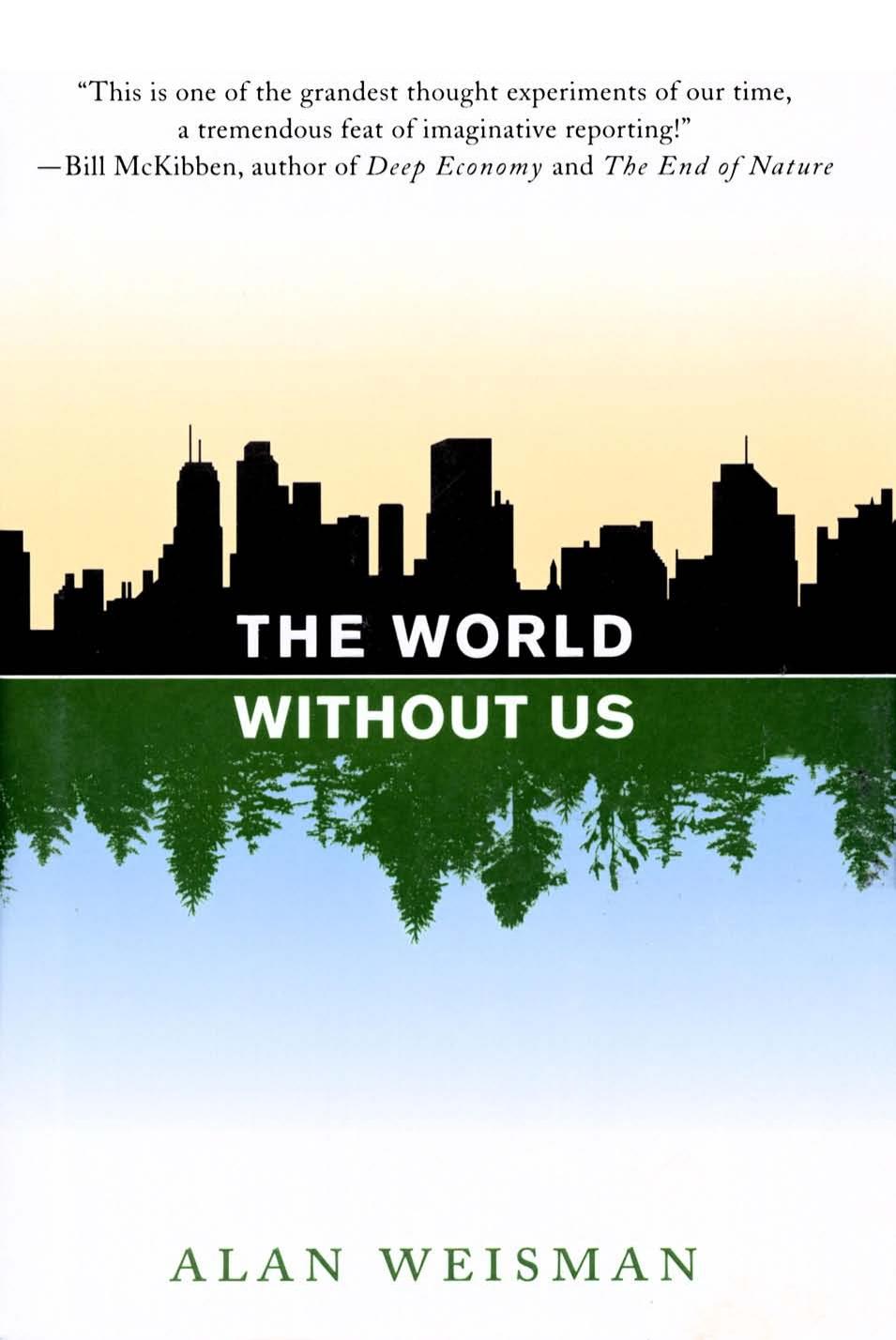The World Without Us by Alan Weisman

Author:Alan Weisman
Language: eng
Format: mobi, epub, pdf
Publisher: St. Martin's Press
Published: 2010-05-17T04:00:00+00:00
5. Beyond the Farm
Rothamsted research scientist Paul Poulton stands in November drizzle, knee-deep in holly, surrounded by what will be around after human cultivation ceases. Born just a few miles up the road, lanky Paul Poulton is as rooted to this land as any crop. He started working here right out of school, and now his hair has whitened. For more than 30 years, he’s tended experiments that began before he was born. He’d like to think they will continue on long after he himself turns to bone dust and compost. But one day, he knows, the wild green profusion beneath his muddy irrigation boots will be the only Rothamsted experiment that will still matter.
It is also the only one that has required no management. In 1882, it occurred to Lawes and Gilbert to fence off a half-acre of Broadbalk—the winter-wheat field that had variously received inorganic phosphate, nitrogen, potassium, magnesium, and sodium—and leave the grain unharvested, just to see what would happen. The following year, a new crop of self-seeded wheat appeared. The year after that, the same thing occurred, though by now invading hogweed and creeping woundwort were competing for the soil.
By 1886, only three stunted, barely recognizable wheat stalks germinated. A serious incursion of bentgrass had also appeared, as well as a scattering of yellow wildflowers, including orchid-like meadow peas. The next year, wheat—that robust Middle Eastern cereal grown here even before the Romans arrived—had been entirely vanquished by these returning natives.
Around that time, Lawes and Gilbert abandoned Geescroft, a parcel about half a mile away, consisting of slightly more than three acres. From the 1840s to the 1870s, it had been planted in beans, but after 30 years, it was clear that even with chemical boosts, growing beans continuously without rotation was a failure. For a few seasons, Geescroft was seeded in red clover. Then, like Broadbalk, it was fenced off to fend for itself.
For at least two centuries before Rothamsted’s experiments began, Broadbalk had received dressings of local chalk, but low-lying Geescroft, hard to cultivate without digging drainage, apparently hadn’t. In the decades following abandonment, Geesecroft turned increasingly acidic. At Broadbalk, which was buffered by years of heavy liming, pH had barely lowered. Complex plants like chickweed and stinging nettle were showing up there, and within 10 years filbert, hawthorn, ash, and oak seedlings were establishing themselves.
Geescroft, however, remained mainly a prairie of cocksfoot, red and meadow fescue, bentgrass, and tufted hair grass. Thirty years would pass before woody species began shading its open spaces. Broadbalk, meanwhile, grew tall and dense. By 1915 it added 10 more tree types, including field maple and elm, plus thickets of blackberry and a dark green carpet of English ivy.
As the 20th century progressed, the two parcels continued their separate metamorphoses from farmland to woodland, the differences between them amplifying as they matured, echoing their distinct agricultural histories. They became known as the Broadbalk and Geescroft Wildernesses—a seemingly pretentious term for land totaling less than four acres, yet perhaps fitting in a country with less than 1 percent of its original forests remaining.
Download
The World Without Us by Alan Weisman.epub
The World Without Us by Alan Weisman.pdf
This site does not store any files on its server. We only index and link to content provided by other sites. Please contact the content providers to delete copyright contents if any and email us, we'll remove relevant links or contents immediately.
| Anatomy | Animals |
| Bacteriology | Biochemistry |
| Bioelectricity | Bioinformatics |
| Biology | Biophysics |
| Biotechnology | Botany |
| Ecology | Genetics |
| Paleontology | Plants |
| Taxonomic Classification | Zoology |
Sapiens: A Brief History of Humankind by Yuval Noah Harari(14252)
The Tidewater Tales by John Barth(12608)
Mastermind: How to Think Like Sherlock Holmes by Maria Konnikova(7227)
Do No Harm Stories of Life, Death and Brain Surgery by Henry Marsh(6891)
The Thirst by Nesbo Jo(6828)
Why We Sleep: Unlocking the Power of Sleep and Dreams by Matthew Walker(6618)
Life 3.0: Being Human in the Age of Artificial Intelligence by Tegmark Max(5474)
Sapiens by Yuval Noah Harari(5294)
The Longevity Diet by Valter Longo(5021)
The Body: A Guide for Occupants by Bill Bryson(4974)
The Rules Do Not Apply by Ariel Levy(4861)
The Immortal Life of Henrietta Lacks by Rebecca Skloot(4526)
Animal Frequency by Melissa Alvarez(4395)
Why We Sleep by Matthew Walker(4361)
The Hacking of the American Mind by Robert H. Lustig(4318)
Yoga Anatomy by Kaminoff Leslie(4306)
All Creatures Great and Small by James Herriot(4233)
Double Down (Diary of a Wimpy Kid Book 11) by Jeff Kinney(4207)
Barron's AP Biology by Goldberg M.S. Deborah T(4099)
